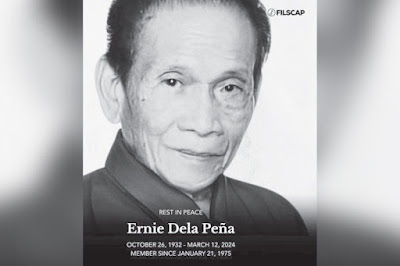The Faithlessness of Sinogo
Somewhere off the northern coast of Mindanao a strong current begins to travel northward. It runs to the island of Siquijor and then, turning slightly to the east, goes racing between the islands of Cebu and Negros. At the narrow entrance between San Sebastian and Ayucatan it breaks up into hundreds of small whirlpools that make the water hiss and bubble for a distance of nearly three miles.
For steamers and large boats there is not the slightest danger, but to the native in his little sacayan with its bamboo outriggers these whirlpools are objects of dread and fear. He will go miles out of his way to escape them. If you inquire as to the reason, he will explain that the Liloan, or whirlpool, is a thing always to be avoided, and then he will tell you the story of Sinogo.
Years and years ago, when Maguayan ruled the sea and the terrible Captan launched his thunderbolts from above, the water and air were filled with swimming and flying monsters. Those that lived in the air were armed with great teeth and sharp claws; but, though they were fierce and savage, they lived together in peace, for they feared the anger of their master Captan.
In the sea, however, all was not so peaceful, for some of the monsters were so huge and savage and so confident in their strength that Maguayan could do nothing with them. He lived in constant fear of attack from these fierce subjects and finally, in despair, called on Captan to help him in his trouble.
Accordingly Captan sent his swift messengers to every part of the earth, air, and sea, and ordered that a council of all the creatures in the world should be held. He named the little island of Caueli in the center of the Sulu Sea as the meeting place, and commanded all to hasten there without delay.
Soon the members of the council began to arrive, and the sky was darkened by flying monsters, and the water boiled as the terrible reptiles of the sea rushed to the place appointed.
In a short time the little island was crowded with these dreadful creatures. There were huge Buayas from Mindanao, fierce Tic-bolans from Luzon, savage Sigbins from Negros and Bohol, hundreds of Unglocs from Panay and Leyte, and great Uak Uaks and other frightful monsters from Samar and Cebu. They grouped themselves in a large circle around a golden throne on which sat Captan and Maguayan, and while waiting the commands of their master filled the air with shrieks and howls.
At length Captan raised his hand and the noise instantly stopped. Then he announced his decree. He said that Maguayan was his brother god and should be treated with the same respect. He commanded all his subjects to obey the god of the sea and told them that he would kill with a thunderbolt any that disobeyed this order. Then he desired all to return to their own regions, and again the air was filled with a noise of thunder and the sea roared and foamed as the monsters went back to their homes.
Soon there remained on the island only Captan, Maguayan, and three messengers of Captan, who were called Sinogo, Dalagan, and Guidala. These were giants in size and had large wings which enabled them to fly with great swiftness. They had long spears and sharp swords and were very brave and powerful. Of the three, Dalagan was the swiftest, Guidala the bravest, and Sinogo the handsomest and best loved by Captan.
When all the creatures were gone Maguayan thanked Captan, but the great god said that he had only done his duty in helping his brother. Then he gave Maguayan a little golden shell and explained to him its wonderful power. Maguayan had but to put it in his mouth and he could change his form to that of any creature he pleased. In case a monster, defying Captan's orders, should attack him, he had simply to change himself into a stronger monster of twice the size of his enemy, and then fight and kill him easily.
Again Maguayan thanked his brother god and, taking the shell, placed it on the throne beside him. Then Captan ordered his messengers to bring food and drink, and soon the two gods were feasting merrily.
Now it happened that Sinogo had been standing behind the throne and had heard all that had been said. He was filled with a desire to own the wonderful shell, and in spite of the many favors he had received from Captan he resolved to steal it. The more he thought of its great power, the more he longed for it. With it he could rule the earth and sea as a god, and, by hiding, he might avoid the anger of Captan. So he watched for an opportunity to make away with it. Finally his chance came. While handing Maguayan some food, he slyly caught up the shell, and soon afterwards quietly slipped away.
For some time his absence was not discovered, but all at once Captan called for his favorite messenger and, receiving no reply, ordered Dalagan to search for him. Soon Dalagan returned and reported that Sinogo could not be found on the island. At the same time Maguayan noticed that the golden shell was gone.
Then Captan knew that his messenger had stolen the shell and escaped. He flew into a great rage and swore he would kill Sinogo. He ordered Dalagan and Guidala to hasten to the north in search of the faithless messenger and to bring him back a prisoner.
Swiftly northward over the blue sea flew the messengers, and near the island of Guimaras caught sight of Sinogo. He saw his pursuers and flew all the swifter, but he was no match for them in speed. Nearer and nearer they came and then, drawing their swords, rushed forward to seize him.
But Sinogo was not to be easily caught. Quick as a flash, he placed the shell in his mouth and dived down into the water, at the same time changing himself into a huge crocodile-shaped Buaya with scales like armor of steel.
In vain Dalagan and Guidala rained blows on the monster. The swords could not pierce the heavy scales.
Up through Guimaras Strait the chase went on, and Sinogo tore up the water in his flight. So great was the disturbance of the ocean that, as they rounded the northern coast of Negros, the waves dashed completely over the little island of Bacabac, sweeping away the hills and bringing the land to the level of the sea.
Still the rapid flight went on. Straight for Bantayan headed Sinogo, but suddenly changing his course he dashed into the narrow channel between Negros and Cebu. Then Dalagan, leaving Guidala to continue the chase alone, flew swiftly back to Caueli and told Captan that Sinogo was in the little strait. Up sprang the god and, flying directly east, he posted himself at the southern entrance of the channel. In his hand he held an enormous thunderbolt, and thus armed he waited for the appearance of Sinogo.
Down into the narrow entrance sped the faithless messenger, tearing up the water in his mad flight, while the brave Guidala struck in vain at his huge body. Suddenly a roar of thunder sounded and the thunderbolt fell on the back of the monster, bearing him down beneath the waves and then, stiffening like a bar of iron, pinning him to the bottom far below. In vain he struggled to free himself; the bar held him fast and sure. In his struggles the shell fell from his mouth, but a little Tamban caught it and brought it safely to Captan.
Thousands of years have passed, but far under the water, like a fly on a pin, Sinogo struggles in the form of a huge Buaya. The water bubbles around him and for three miles little whirlpools go racing up the channel. And the native in his little sacayan avoids the narrow entrance where the water boils and foams, for Sinogo still twists and squirms, and the Liloan is a thing to be feared and dreaded.
+++
Die Treulosigkeit von Sinogo
Irgendwo vor der Nordküste von Mindanao beginnt eine starke Strömung nach Norden zu ziehen. Sie verläuft zur Insel Siquijor und rast dann, leicht nach Osten abbiegend, zwischen den Inseln Cebu und Negros hindurch. An der schmalen Einfahrt zwischen San Sebastian und Ayucatán zerfällt es in Hunderte kleiner Strudel, die das Wasser über eine Entfernung von fast fünf Kilometern zischen und sprudeln lassen.
Für Dampfer und große Boote besteht nicht die geringste Gefahr, aber für den Eingeborenen in seinem kleinen Sacayan mit seinen Bambusauslegern sind diese Strudel Objekte des Schreckens und der Furcht. Er wird alles tun, um ihnen zu entkommen. Wenn Sie sich nach dem Grund erkundigen, wird er Ihnen erklären, dass man den Liloan oder Strudel immer meiden sollte, und dann wird er Ihnen die Geschichte von Sinogo erzählen.
Vor vielen Jahren, als Maguayan das Meer beherrschte und der schreckliche Kapitän seine Blitze von oben abfeuerte, waren Wasser und Luft voller schwimmender und fliegender Monster. Diejenigen, die in der Luft lebten, waren mit großen Zähnen und scharfen Krallen bewaffnet; Doch obwohl sie wild und wild waren, lebten sie in Frieden zusammen, denn sie fürchteten den Zorn ihres Herrn Captan.
Im Meer war jedoch nicht alles so friedlich, denn einige der Monster waren so groß und wild und so überzeugt von ihrer Stärke, dass Maguayan nichts mit ihnen anfangen konnte. Er lebte in ständiger Angst vor Angriffen dieser wilden Untertanen und rief schließlich in seiner Verzweiflung Captan an, ihm in seiner Not zu helfen.
Dementsprechend sandte Captan seine schnellen Boten in alle Teile der Erde, der Luft und des Meeres und befahl, dass ein Rat aller Geschöpfe der Welt abgehalten werden sollte. Als Treffpunkt nannte er die kleine Insel Caueli in der Mitte der Sulusee und befahl allen, sich unverzüglich dorthin zu begeben.
Bald begannen die Mitglieder des Rates einzutreffen, und der Himmel wurde von fliegenden Monstern verdunkelt, und das Wasser kochte, als die schrecklichen Reptilien des Meeres an den bestimmten Ort stürmten.
In kurzer Zeit war die kleine Insel voller dieser schrecklichen Kreaturen. Es gab riesige Buayas aus Mindanao, wilde Tic-Bolans aus Luzon, wilde Sigbins aus Negros und Bohol, Hunderte von Unglocs aus Panay und Leyte sowie große Uak-Uaks und andere schreckliche Monster aus Samar und Cebu. Sie gruppierten sich in einem großen Kreis um einen goldenen Thron, auf dem Captan und Maguayan saßen, und während sie warteten, erfüllten die Befehle ihres Herrn die Luft mit Schreien und Heulen.
Schließlich hob Captan seine Hand und der Lärm hörte sofort auf. Dann verkündete er sein Dekret. Er sagte, dass Maguayan sein Brudergott sei und mit dem gleichen Respekt behandelt werden sollte. Er befahl allen seinen Untertanen, dem Gott des Meeres zu gehorchen, und sagte ihnen, dass er jeden, der diesem Befehl nicht gehorchte, mit einem Blitz töten würde. Dann forderte er alle auf, in ihre eigenen Regionen zurückzukehren, und erneut war die Luft von Donnergeräuschen erfüllt und das Meer toste und schäumte, als die Monster in ihre Häuser zurückkehrten.















